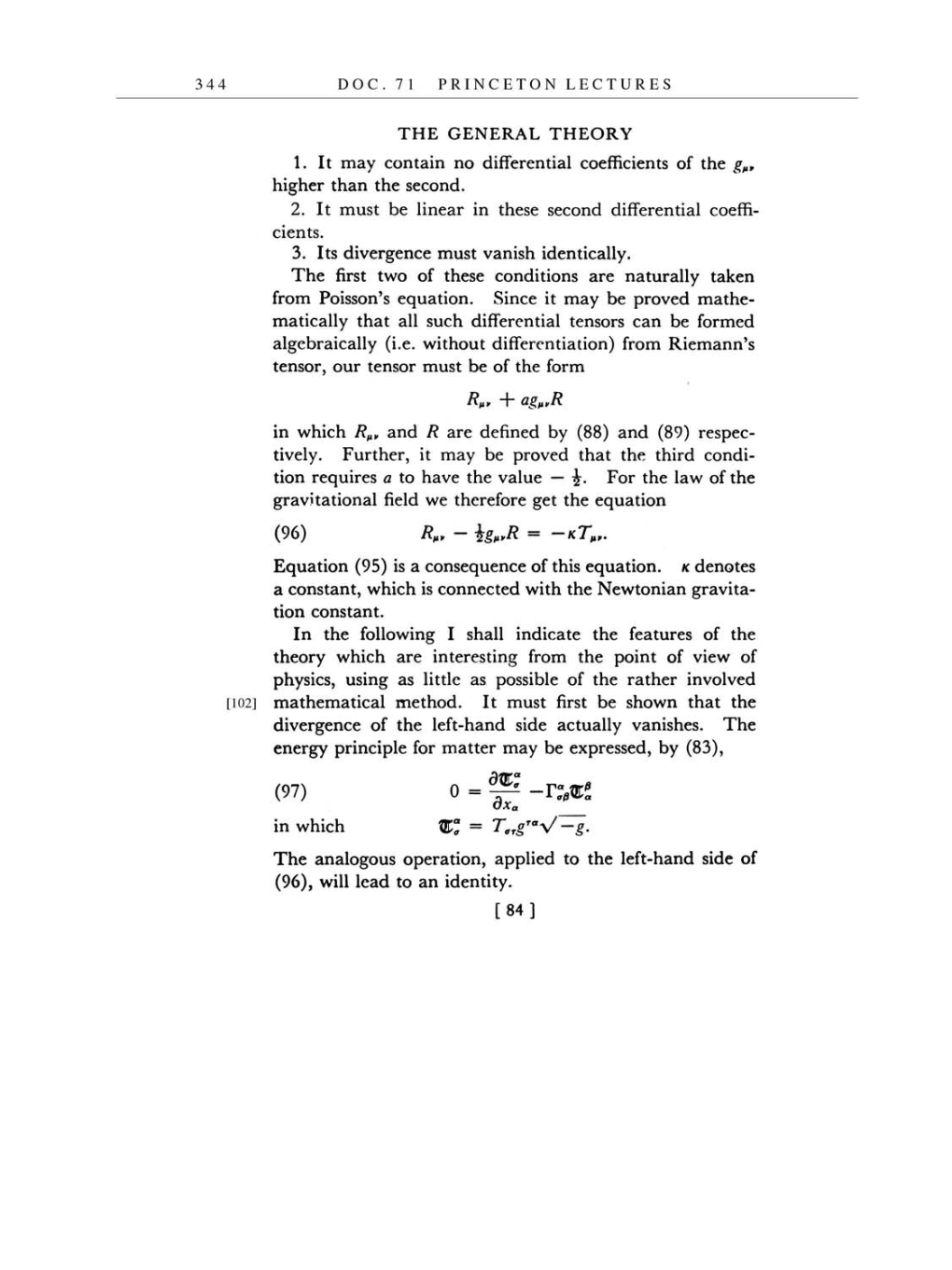344 DOC. 71 PRINCETON LECTURES
THE GENERAL THEORY
1.
It
may
contain
no
differential
coefficients of the
guv
higher
than the
second.
2.
It
must
be
linear in
these second
differential
coeffi-
cients.
3.
Its
divergence must
vanish
identically.
The
first
two
of
these
conditions
are
naturally
taken
from Poisson’s
equation.
Since it
may
be
proved
mathe-
matically
that
all
such differential
tensors
can
be formed
algebraically
(i.e.
without
differentiation)
from
Riemann’s
tensor,
our
tensor
must
be of
the
form
Ruv
+
aguvR
in
which
Ruv
and
R
are
defined
by
(88)
and
(89)
respec-
tively.
Further,
it
may
be
proved
that the third condi-
tion
requires
a
to
have the value
- 1/2.
For the
law of the
gravitational
field
we
therefore
get
the
equation
(96)
Ruv
-
1/2guvR
=
-kTuv.
Equation (95)
is
a
consequence
of
this
equation.
k
denotes
a
constant,
which
is
connected with the Newtonian
gravita-
tion
constant.
In the
following
I shall
indicate the features
of the
theory
which
are
interesting
from
the
point
of
view of
physics,
using
as
little
as
possible
of
the rather
involved
[102]
mathematical method. It
must
first be shown
that the
divergence
of the left-hand
side
actually
vanishes.
The
energy
principle
for
matter may
be
expressed,
by
(83),
(97)
0
=
^
-
WS
in which
Œ“
= T,TgTaV
-g.
The
analogous operation, applied to
the left-hand
side
of
(96),
will
lead
to
an
identity.
[84]
